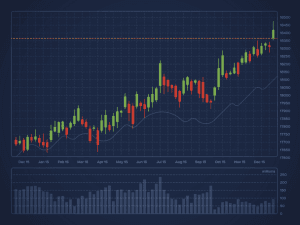
Success in investing doesn’t come from luck — it comes from knowing what to look for. While market noise can be overwhelming, the best investors filter it out by focusing on the numbers that matter most. Whether you’re trading stocks, indices, or exploring opportunities in binary options on the Stockity trading platform, understanding key metrics is essential to making informed, confident decisions.
If you’re serious about maximizing your returns, these five metrics should be part of your daily toolkit.
1. Price-to-Earnings Ratio (P/E): Is the Stock Overvalued or a Bargain?
The P/E ratio compares a company’s share price to its earnings per share (EPS). It’s one of the most commonly used metrics to assess whether a stock is overvalued, undervalued, or fairly priced.
- Formula: P/E = Stock Price / Earnings per Share
- Interpretation:
- A high P/E may suggest overvaluation or high growth expectations.
- A low P/E could indicate undervaluation — or potential risk.
Using the Stockity trading platform, you can view this metric in real-time when evaluating equities. Whether you’re executing a long-term position or a stockity binary trade based on short-term market movement, this data is vital for understanding value.
2. Return on Equity (ROE): How Efficient Is the Company?
ROE measures how effectively a company generates profit from shareholders’ equity. It’s a strong indicator of management performance and business health.
- Formula: ROE = Net Income / Shareholder’s Equity
- Interpretation:
- A higher ROE signals strong financial performance.
- Consistent ROE over 15% is generally a good sign for long-term investors.
Within the Stockity platform, ROE is a key figure to watch when researching companies for both short-term speculation and long-term portfolio growth.
3. Debt-to-Equity Ratio (D/E): Is the Company Managing Its Risk?
This ratio helps investors understand how much debt a company is using to finance its assets compared to equity.
- Formula: D/E = Total Liabilities / Shareholder’s Equity
- Interpretation:
- A high D/E ratio may indicate financial risk.
- A lower D/E suggests a more conservative, stable company.
This is especially important for value investors and swing traders analyzing balance sheets. Stockity provides instant access to financial reports so you can quickly assess a company’s risk profile before entering any position.
4. Earnings Per Share (EPS): What Are You Getting for Your Money?
EPS reveals how much profit a company makes for each share of stock. It’s a primary factor in determining a stock’s performance and influences many other key metrics, like P/E.
- Formula: EPS = (Net Income – Dividends on Preferred Stock) / Average Outstanding Shares
- Interpretation:
- A rising EPS signals improving profitability.
- A falling EPS may raise red flags for investors.
Using the Stockity trading platform, you can track EPS trends across quarters and use them as a basis for trading strategies — especially when anticipating binary events such as earnings reports.
5. Relative Strength Index (RSI): When to Enter or Exit a Trade
Unlike the other metrics, RSI is a technical indicator, ideal for short-term traders. RSI measures the speed and change of recent price movements, signaling whether an asset is overbought or oversold.
- Scale: RSI ranges from 0 to 100
- Above 70 = Overbought (possible sell signal)
- Below 30 = Oversold (possible buy signal)
This metric is invaluable for traders using the Stockity binary system, where timing is everything. RSI is integrated into the charting tools on Stockity, allowing users to plan entry and exit points with greater precision.
Why These Metrics Matter on Stockity
The Stockity trading platform empowers modern investors by offering instant access to these metrics and more. Whether you’re evaluating a company’s fundamentals or acting on a short-term technical setup, you need real-time data and simplified insights — and Stockity delivers on both fronts.
- For long-term investors: Use P/E, ROE, and EPS to assess company health and value.
- For short-term traders: RSI and D/E ratio help gauge timing and risk.
- For binary traders: Metrics like RSI and EPS are particularly useful around high-impact events like earnings releases.
Final Thoughts: Invest with Precision, Not Emotion
In today’s data-driven environment, successful investing isn’t about guessing — it’s about knowing. Mastering these five metrics won’t just improve your trades; it will sharpen your instincts, deepen your confidence, and make every decision more strategic.
Whether you’re just starting out or looking to refine your process, the Stockity trading platform is designed to support smarter, faster, and more informed investing — across all experience levels.
Ready to stop guessing and start growing? Join the thousands of traders using Stockity every day to turn insights into action.





